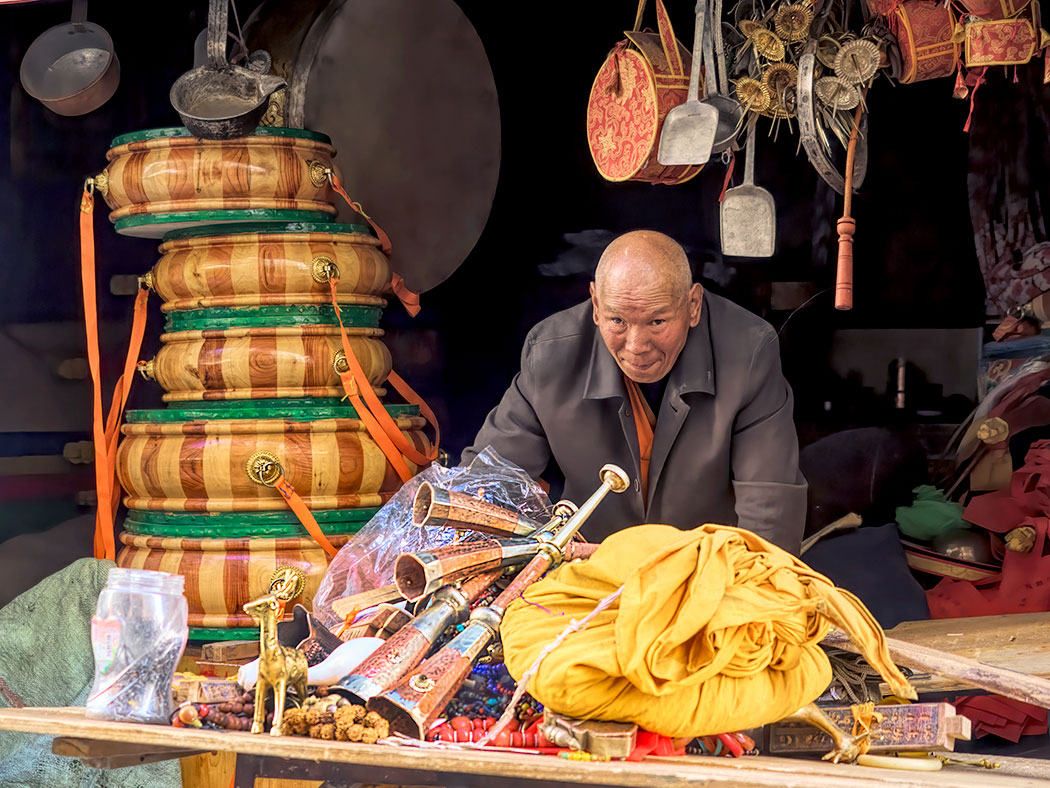Never one to follow the crowds, I wandered away from busy Barkhor Square in Lhasa, Tibet. I had completed an obligatory Kora (clockwise circuit) of the Jokhang Temple, dodging prostrating pilgrims and crowds of tourists, but now the back streets beckoned. Just a block from the temple the teeming crowds dissipated and I was the only foreigner in sight. Tibetan women in traditional striped aprons sat on stoops, twirling prayer wheels and muttering mantras. Toddlers with sagging diapers waddled after stray cats. Workers towed bulging hemp sacks down the gray flagstone pavement on wooden dollies.
The lanes grew narrower as I penetrated deeper into the traditional neighborhood. A pyramid of yellow plastic containers dominated one shop in Old Lhasa. The sweet, slightly rancid scent gave them away as tubs of yak butter for altar lamps. A postage-stamp sized cafe advertised butter tea and tsampa, a mixture of milled barley, jaggery, and yak butter pounded into delicious cakes. A third sported an array of hand-loomed yak wool carpets. Yet it was the shop in the above photo that best captured the essence of Old Lhasa for me. Blending crass commercialism with religiosity, piles of telescoping brass trumpets and giant ceremonial drums were surrounded by common candle holders, pots and pans, and gaudy strands of beads.
Author’s note: Many thanks to Himalaya Journey, the small group tour company with whom I traveled. Not only did they provide an excellent tour, they also arranged for us to have free time to wander the streets and shop in Old Lhasa on our own. If you enjoyed this story about Tibetan culture, you may also be interested to reading why children in Tibet often wear a black smudge on their noses.


Nice photo. I am planning to visit Tibet as soon as its open to international travellers. your photo is a great inspiration.
Hi James. I hope you get to visit Tibet. It’s an amazing experience.